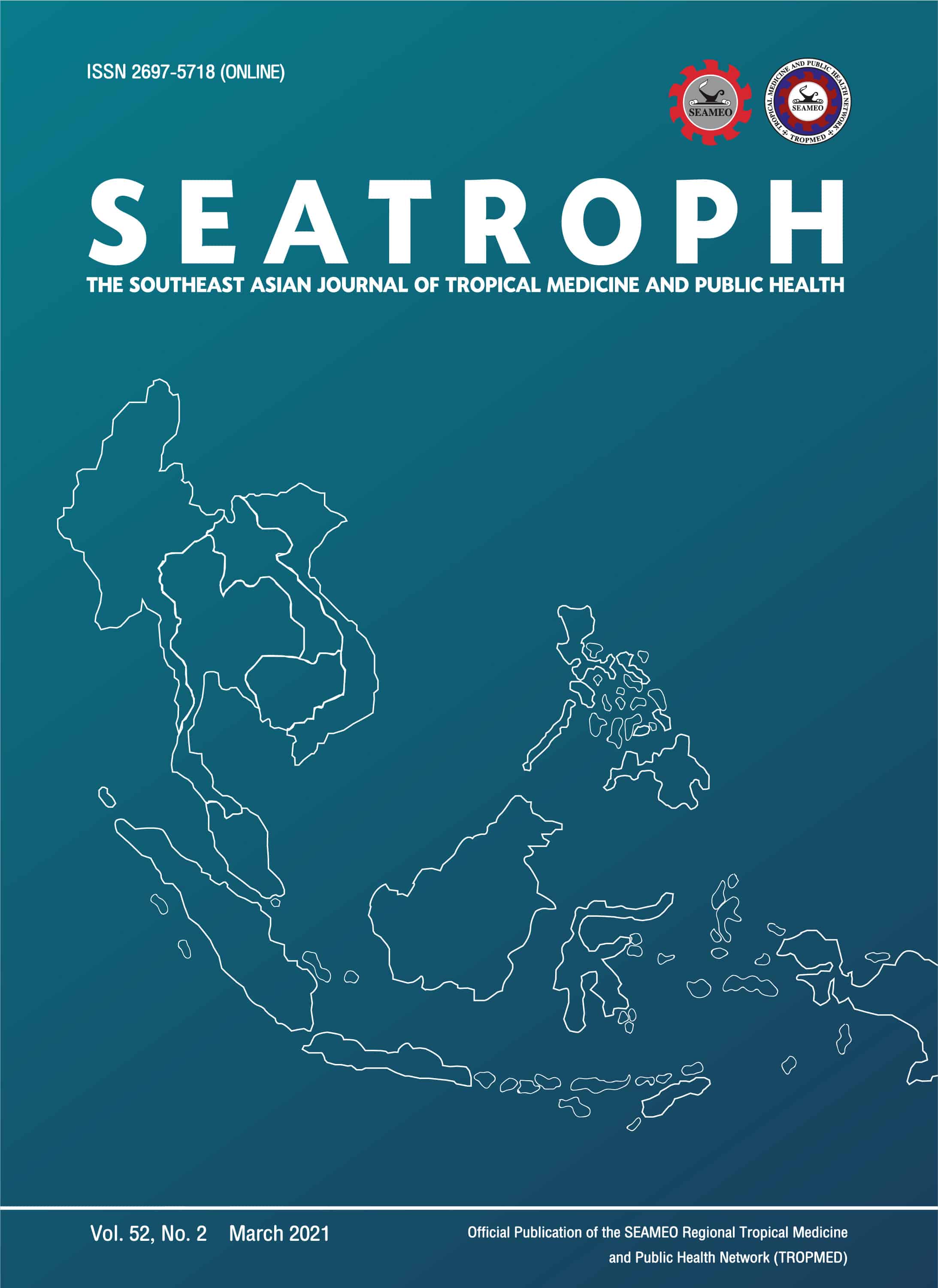
Prevalence and Antibiogram Profiles of Staphylococcus Aureus Isolates from Patients at Taksin Hospital, Bangkok, Thailand (January 2019 – May 2020) (2021)
Title : Prevalence and Antibiogram Profiles of Staphylococcus Aureus Isolates from Patients at Taksin Hospital, Bangkok, Thailand (January 2019 – May 2020)
Researcher : Piyawan Pipobwatthana , Chalermsri Pummangura, Sasitorn Jaroennon, Chanwit Tribuddharat, Huttaya Thuncharoon, Apichot So-Ngern, Vipavee Rodjun, Ruxjinda Wattanalai and Somporn Srifuengfung
Link to article: The Southeast Asian Journal of Tropical Medicine and Public Health, 2021, 52(2), pp. 230–239 https://journal.seameotropmednetwork.org/index.php/jtropmed/article/view/432
Journal : The Southeast Asian Journal of Tropical Medicine and Public Health / Scopus
Citation : ปิยวรรณ พิภพวัฒนา, เฉลิมศรี พุ่มมังกูร, ศศิธร เจริญนนท์, ชาญวิทย์ ตรีพุทธรัตน์, หัทยา ธัญจรูญ, อภิโชติ โซ่เงิน, วิภาวี รอดจันทร์, รักษ์จินดา วัฒนลัย และ สมพร ศรีเฟื่องฟุ้ง. (2564). Prevalence และแอนติบิโอแกรมประวัติของการแยกเชื้อ Staphylococcus Aureus จากผู้ป่วยที่โรงพยาบาลตากสินกรุงเทพมหานครประเทศไทย (มกราคม 2562 – พฤษภาคม 2563). วารสารเวชศาสตร์เขตร้อนและสาธารณสุขแห่งเอเชียตะวันออกเฉียงใต้, 52(2), 230-239.
ฐานข้อมูลงานวิจัย มหาวิทยาลัยสยาม : https://e-research.siam.edu/kb/prevalence-and-antibiogram-profiles/
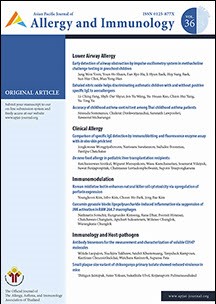
Reference value of Forced Oscillation Technique for healthy preschool children (2021)
Title : Reference value of Forced Oscillation Technique for healthy preschool children
Researcher : Clin.Prof.Suwat Benjaponpitak
Department : Faculty of Medicine, Siam University, Bangkok, Thailand
E-mail : med@siam.edu
Abstract : Background: The reference values of Forced Oscillation Technique (FOT) parameters of the inspiratory and expiratory phase for preschool children have not yet been established.
Objective: To evaluate FOT measures in Thai healthy preschool children.
Methods: Preschool children, aged 3-6 years, were screened. Children who were positive for the International Study of Asthma and Allergies in Childhood (ISAAC) questionnaire for asthma, positive family history of allergic diseases, recent lower respiratory tract infections, and environmental tobacco smoke were excluded. FOT parameters, including resistance (Rrs), reactance (Xrs), frequency of resonance (Fres) and area of reactance (ALX), were measured.
Results: A total of 390 healthy children with the mean age of 5.1 ± 0.9 years were enrolled. FOT was successfully performed in 378 children (96.9%). The mean (SD) for the whole breath (WB) resistance at 5Hz (R5), 20 Hz (R20) and R5-20 were 11.49 (2.69) cmH2O/L/s, 9.46 (2.19) cmH2O/L/s and 2.02 (0.82) cmH2O/L/s, respectively. The median (IQR) for WB reactance at 5Hx (X5), Fres and ALX were -1.51 (-2.37 to -0.96) cmH2O/L/s, 11.17 (8.50-15.65) Hz, and 7.53 (3.72-14.32) cmH2O/L/s, respectively. Significantly difference in WB R5, R20, X5, Fres and ALX between male and female children were demonstrated. The expiratory phase R5, R20, R5-20 were significantly higher than those of the inspiratory phase (p < 0.001). There are significant correlations between the height and FOT parameters. Reference curve for the FOT parameters was generated based on height using the lambda-mu-sigma (LMS) method.
Conclusion: Reference curve of FOT parameters measured in healthy preschool children were demonstrated. Majority of preschool children could perform FOT method.
Key words: Respiratory resistance, Respiratory reactance, LMS method, Frequency of resonance, Area of reactance
Link to article : Asian Pacific Journal of Allergy and Immunology, 2021, 39(2), pp. 89–95. DOI: 10.12932/AP-110618-0334
Journal : Asian Pacific journal of allergy and immunology / in Scopus
Bibliography : Mukdjindapa, P., Manuyakorn, W., Kiewngam, P., Sasisakulporn, C., Pongchaikul, P., Kamchaisatian, W., & Benjaponpitak, S. (2021). Reference value of Forced Oscillation Technique for healthy preschool children. Asian Pac J Allergy Immunol, 39(2), 89–95. doi: 10.12932/AP-110618-0334. Epub ahead of print. PMID: 30525741.

Skin Prick Test Versus Phadiatop as a Tool for Diagnosis of Allergic Rhinitis in Children (2021)
Title : Skin Prick Test Versus Phadiatop as a Tool for Diagnosis of Allergic Rhinitis in Children
Researcher : Clin.Prof.Suwat Benjaponpitak
Department : Faculty of Medicine, Siam University, Bangkok, Thailand
E-mail : med@siam.edu
Abstract : Background: Skin prick test (SPT) or Phadiatop, a multi-allergen IgE screening test, was used as a tool for detecting aeroallergen sensitization.
Objective: To compare SPT and Phadiatop as a tool for diagnosis allergic rhinitis (AR) using the nasal provocation test (NPT) as a comparative standard.
Methods: Children aged 5-18 years with rhinitis symptoms more than 6 times in the past year were enrolled. SPT to 13 common aeroallergens, serum for Phadiatop, and NPT to Dermatophagoides pteronyssinus (Der p) were performed. NPT to mixed cockroach (CR) were performed in children who had CR sensitization and negative NPT to Der p. Children who had a disagreement between the result of SPT and Phadiatop or having negative results were evaluated for specific IgE (sIgE) to common aeroallergens.
Results: One hundred-forty children were enrolled with the mean age of 9.8 ± 3 years, 56% were male. Of 92 children (65.7%) with positive SPT to any aeroallergens, 88 children (95.6%) were sensitized to house dust mite (HDM). NPT showed positive results in 97 children (69.3%). Of 48 children who showed negative SPT, 4 children (8.3%) had sIgE to aeroallergens but NPT was positive in 1 child. Eighty-eight children (62.9%) had positive tests for Phadiatop and 4 (4.5%) of them had negative results for NPT to Der p. Among 52 children who had negative results for Phadiatop, 4 children (7.6%) had sIgE to aeroallergens but NPT was positive in 2 children (3.8%). SPT and Phadiatop showed 94.2% agreement: with Kappa 0.876, p < 0.001. Using NPT as a comparative standard for diagnosis for AR, SPT showed a sensitivity of 89.6% and specificity of 88.3% and Phadiatop provided the sensitivity of 88.6% and specificity of 95.3%.
Conclusions: SPT to aeroallergen and Phadiatop have good and comparable sensitivity and specificity for the diagnosis of AR in children.
Keywords: IgE; Phadiatop; aeroallergen; children; cockroach allergic; dust mite; nasal provocation test; rhinitis; skin prick test.
Link to Academic article: DOI: 10.1177/1945892420938300
Journal : American Journal of Rhinology & Allergy Volume 35 Issue 1, January 2021
Bibliography : Traiyan, S., Manuyakorn, W., Kanchongkittiphon, W., Sasisakulporn, C., Jotikasthira, W., Kiewngam, P., Kamchaisatian, W., & Benjaponpitak, S. (2021, January). Skin Prick Test Versus Phadiatop as a Tool for Diagnosis of Allergic Rhinitis in Children. Am J Rhinol Allergy, 35(1), 98-106. doi: 10.1177/1945892420938300. Epub 2020 Jun 27. PMID: 32597210.
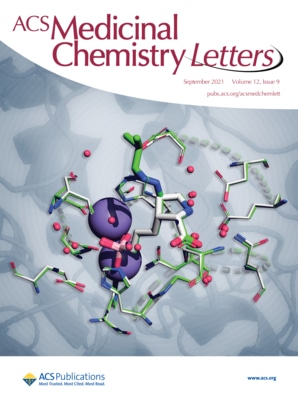
Synthesis of Benzoazepine Derivatives via Azide Rearrangement and Evaluation of Their Antianxiety Activities (2021)
Title : Synthesis of Benzoazepine Derivatives via Azide Rearrangement and Evaluation of Their Antianxiety Activities
Researcher : Onrapak Reamtong, Sarawut Lapmanee, Jumreang Tummatorn, Nitwaree Palavong, Charnsak Thongsornkleeb, and Somsak Ruchirawat
Department : Faculty of Medicine, Siam University, Bangkok, Thailand
E-mail : sarawut.lap@siam.ed
Link to article : ACS Medicinal Chemistry Letters, 2021, 12(9), 1449–1458. https://doi.org/10.1021/acsmedchemlett.1c00275
Citation : Reamtong, O., Lapmanee, S., Tummatorn, J., Palavong, N., Thongsornkleeb, C., & Ruchirawat, S. (2021). Synthesis of Benzoazepine Derivatives via Azide Rearrangement and Evaluation of Their Antianxiety Activities. ACS Medicinal Chemistry Letters, 12(9), 1449–1458. https://doi.org/10.1021/acsmedchemlett.1c00275
Journal : ACS Medicinal Chemistry Letters / in Scopus
ฐานข้อมูลงานวิจัย มหาวิทยาลัยสยาม : –
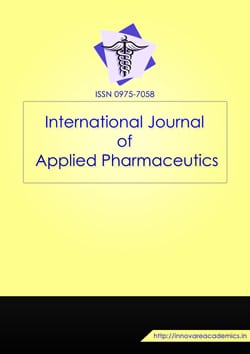
Synthesis of carboxymethyl cellulose from rice husk (2021)
Title : Synthesis of carboxymethyl cellulose from rice husk
Researcher : Jarmkom, K., Khobjai, W., Teachaoei, S., Shuwisitkul, D.
Department :
Abstract : Objective: The purpose of this research was to produce carboxymethyl cellulose from rice husk (CMCRH) and used it as a raw material in food or health products.
Methods: Cellulose was extracted from husk rice and converted to CMC (CMCRH) using sodium hydroxide (NaOH) and monochloroacetic acid in isopropanol (C3H8O).
Results: CMCRH was characterized for chemical composition and morphology by scanning electron microscopy. Microscopy analysis showed that chemical composition changes with increasing sodium content (Na-). Likewise, morphology has changed. Physicochemical and viscosity tests showed that were similar properties compare with commercial CMC.
Conclusion: CMC is derived cellulose that is used in products for various applications. RH is an agricultural waste that is carried out to synthesize CMC (CMCRH). Finally, CMCRH has the potential to be used in raw materials in food or health products which biodegradable material.
Keywords: Cellulose, Carboxymethyl cellulose, Rice husk
Link to Academic article: DOI: https://doi.org/10.22159/ijap.2021.v13s1.Y0104
Journal : International Journal of Applied Pharmaceuticsthis, 2021, 13(Special issue 1)
Bibliography : Jarmkom, K., Khobjai, W., Teachaoei, S., & Shuwisitkul, D. (2021). Synthesis of carboxymethyl cellulose from rice husk. International Journal of Applied Pharmaceuticsthis, 13(Special Issue 1), 50–54. Retrieved from https://doi.org/10.22159/ijap.2021.v13s1.Y0104

The analgesic efficacy of anterior femoral cutaneous nerve block in combination with femoral triangle block in total knee arthroplasty: a randomized controlled trial(2021)
Title : The analgesic efficacy of anterior femoral cutaneous nerve block in combination with femoral triangle block in total knee arthroplasty: a randomized controlled trial
Researcher : Kampitak, W., Tanavalee, A., Tansatit, T., …Songborassamee, N., Vichainarong, C.
Abstract : Background: Ultrasound-guided femoral triangle block (FTB) can provide motor-sparing anterior knee analgesia. However, it may not completely anesthetize the anterior femoral cutaneous nerve (AFCN). We hypothesized that an AFCN block (AFCNB) in combination with an FTB would decrease pain during movement in the immediate 12 h postoperative period compared with an FTB alone.
Methods: Eighty patients scheduled to undergo total knee arthroplasty were randomized to receive either FTB alone (FTB group) or AFCNB with FTB (AFCNB + FTB group) as part of the multimodal analgesic regimen. The primary outcome was pain during movement at 12 h postoperatively. Secondary outcomes included numeric rating scale (NRS) pain scores, incidence of surgical incision site pain, intravenous morphine consumption, immediate functional performance, patient satisfaction, and length of hospital stay.
Results: The NRS pain scores on movement 12 h postoperatively were significantly lower in the AFCNB + FTB group than in the FTB group (mean difference: –2.02, 95% CI: –3.14, –0.89, P < 0.001). The incidence of pain at the surgical incision site at 24 h postoperatively and morphine consumption within 48 h postoperatively were significantly lower (P < 0.001), and quadriceps muscle strength at 0° immediately after surgery was significantly greater in the AFCNB + FTB group (P = 0.04).
Conclusions: The addition of ultrasound-guided AFCNB to FTB provided more effective analgesia and decreased opioid requirement compared to FTB alone after total knee arthroplasty and may enhance immediate functional performance on the day of surgery.
Keywords: Arthroplasty; Knee; Nerve block; Peripheral nerves; Postoperative pain; Ultrasonography.
Link to Academic article: DOI: https://doi.org/10.4097/kja.21120
Journal : Korean Journal of Anesthesiology, 2021, 74(6).
Bibliography : Kampitak, W., Tanavalee, A., Tansatit, T., Ngarmukos, S., Songborassamee, N., & Vichainarong, C. (2021). The analgesic efficacy of anterior femoral cutaneous nerve block in combination with femoral triangle block in total knee arthroplasty: a randomized controlled trial. Korean Journal of Anesthesiology, 74(6), 496–505. DOI: https://doi.org/10.4097/kja.21120

The crest injection technique for glabellar line correction and the paracentral artery (2021)
Title : The crest injection technique for glabellar line correction and the paracentral artery
Researcher : Tansatit, T., Uruwan, S., Rungsawang, C.
Abstract : The glabella is a zone that carries a high risk of blindness after performing filler injections. The arteries beneath the glabellar lines were investigated by meticulous dissections in 30 geriatric embalmed cadavers with latex injections into the arterial system. The results showed that the supratrochlear artery, a direct branch of the ophthalmic artery, ascended from the muscular layer of the medial eyebrow along the medial canthal vertical line of the intercanthal vertical zone (53 in 60 hemifaces, or 88%). The dominant single paracentral artery from the radix artery was found within the radix vertical zone (eight out of 30 glabellae, or 27%). Among these, the dominant paracentral artery was near the midline in two cadavers and arose along the radix vertical line in six cadavers. The dominant paracentral artery may be the cause of ocular complications during injections of glabellar lines between the medial eyebrows, especially at the radix vertical lines. The supratrochlear artery might cause ocular complications when an injection is performed close to the medial eyebrows. Pinching to create a skin crest and evert glabellar line for a precise injection is recommended to temporarily occlude the paracentral artery.
Link to Academic article: DOI: 10.1097/GOX.0000000000003982
Journal : Plastic and Reconstructive Surgery – Global Open, 2021, 9(12).
Bibliography : Tansatit, T., Uruwan, S. & Rungsawang, C.,(2021). The crest injection technique for glabellar line correction and the paracentral artery. Plastic and Reconstructive Surgery – Global Open, 9(12), e3982. DOI: 10.1097/GOX.0000000000003982
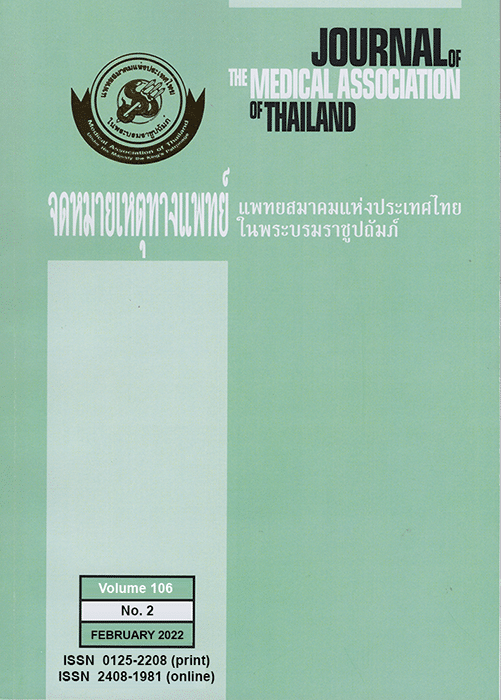
The efficacy and safety of andrographis paniculata extract for the treatment of acute nonspecific upper respiratory tract infections: A randomized double blind placebo controlled trial (2021)
Title : The efficacy and safety of andrographis paniculata extract for the treatment of acute nonspecific upper respiratory tract infections: A randomized double blind placebo controlled trial
Researcher : Leelarasamee, A., Suankratay C , Hunnangkul S , Udompunturak S , Krittayaphong R , Poonsrisawat J , Wongsakorn N , Ittipanitphong C , Sirimai S , Prakairoongthong P , Rattanamaneekorn S , Chaicharoenpong K
Department :
Abstract : Background: The efficacy and safety of Andrographis paniculata (Burn.f.) Wall. ex Nees in the treatment of acute nonspecific upper respiratory tract infection (NS-URI) are still less clear due to the diversity of herbal preparations, dosages, and few large clinical trials. The authors aimed to investigate the therapeutic efficacy and safety of the crude extract from A. paniculata in acute NS-URI.
Materials and Methods: Patients aged 18 to 60 years old from government hospitals, with acute NS-URI were enrolled between January 2018 and August 2019. Drug allocation was randomized in block of six. The crude extract of A. paniculata was packed in capsules containing 20 mg of andrographolide andgiven thrice daily for four days. The placebo capsules were physically identical. Ten tablets of paracetamol were also given as symptom-rescue drug. They were followed at days 4 to 7, and 14 to 30.
Results: Eight hundred sixty-two patients were enrolled between January 2018 and August 2019. Thirty-three patients withdrew from the study, therefore, 829 patients remained in the final analysis. Four hundred nineteen cases (50.5%) received the crude extract, and 410 cases (49.5%) received the placebo. The demographic data, clinical manifestation, and laboratory findings at the enrollment were similar in both groups. At the first follow-up, the rates of severity of each and combined symptoms decreased similarly, and almost all patients felt much better or recovered on day 7. Paracetamol was used by 205 (48.9%) and 185 (45.1%) patients in the experimental and control groups, respectively, and about three tablets taken in each group. Patient satisfaction rates were also similar in both groups. Adverse effects were mild and self-limited in 18 (4.3%) and 9 (2.2%) patients in the experimental and control groups, respectively.
Conclusion: The therapeutic efficacy of the crude extract or active ingredient from A. paniculata for acute NS-URI was not confirmed. Both groups showed similarly mild and few adverse drug reactions.Trial registration: The present study protocol was registered at the Thai Clinical Trials Registry (TCTR 20170329002; date: March 26, 2017).
Keywords: Andrographis paniculata; Andrographolide; Acute nonspecific upper respiratory tract infections; Common cold; Pharyngitis; URI
Link to Academic article: doi.org/10.35755/jmedassocthai.2021.07.13037
Journal : Journal of the Medical Association of Thailandthis, 2021, 104(7)
Bibliography : Leelarasamee, A., Suankratay, C., Hunnangkul, S., Udompunturak, S., Krittayaphong, R., Poonsrisawat, J.,…Chaicharoenpong, K. (2021). The efficacy and safety of andrographis paniculata extract for the treatment of acute nonspecific upper respiratory tract infections: A randomized double blind placebo controlled trial. Journal of the Medical Association of Thailandthis, 104(7), 1204–1213.

The Fractional Order Generalization of HP Memristor Based Chaotic Circuit with Dimensional Consistency (2021)
Title : The Fractional Order Generalization of HP Memristor Based Chaotic Circuit with Dimensional Consistency
Researcher : Banchuin, R.
Department : Faculty of Engineering, & Graduated School of IT, Siam University, Bangkok, Thailand
Email : rawid.ban@siam.edu
Abstract : For studying the practical memristor-based chaotic circuit with fractional-order dynamic and asserting the importance of dimensional consistency awareness, the dimensional consistency aware fractional-order generalization of a Hewlett Packard (HP) memristor-based chaotic circuit with the physical meaning of fractional time component assigned has been proposed in this work. The simplest chaotic circuit based on such practical memristor has been chosen as the candidate circuit. A novel window function dedicated to HP memristor with fractional-order dynamic i.e. fractional-order HP memristor has been adopted for modelling the boundary effect. For the dynamical analysis, the revisited version of Jumarie’s modified Riemann–Liouville fractional derivative and nonlinear transformation has been used. The generalized circuit which has been found to be the simplest fractional-order HP memristor-based chaotic circuit displays a chaotic behavior with significant differences from those of its conventional integer-order prototype and its dimensional consistency ignored counterpart; thus, the importance of dimensional consistency awareness is asserted. The realization of the generalized circuit by using the fractional-order elements is indicated. The circuit emulator has also been presented.
Link to article : Cogent Engineering, 2021, 8(1), 1891731. https://doi.org/10.1080/23311916.2021.1891731
Journal : Cogent Engineering / in Scopus
Citation : Banchuin, R. (2021). The Fractional Order Generalization of HP Memristor Based Chaotic Circuit with Dimensional Consistency. Cogent Engineering, 8(1), 1891731. https://doi.org/10.1080/23311916.2021.1891731
ฐานข้อมูลงานวิจัย มหาวิทยาลัยสยาม :-

Therapeutic drug monitoring of intravenous busulfan in Thai children undergoing hematopoietic stem cell transplantation: A pilot study (2021)
Title : Therapeutic drug monitoring of intravenous busulfan in Thai children undergoing hematopoietic stem cell transplantation: A pilot study
Researcher : Thaksin Jansing, Kleebsabai Sanpakit, Trai Tharnpanich, Thanjira Jiranantakan, Vachira Niphandwongkorn, Busba Chindavijak & Thanarat Suansanae
Link to article: Pediatric Hematology and Oncology, Volume 38, 2021 – Issue 4, pp.346-357. https://doi.org/10.1080/08880018.2020.1871136
Citation : Jansing, T., Sanpakit, K., Tharnpanich, T., Jiranantakan, T., Niphandwongkorn, V., Chindavijak, B., & Suansanae, T. (2021). Therapeutic drug monitoring of intravenous busulfan in Thai children undergoing hematopoietic stem cell transplantation: A pilot study. Pediatric Hematology and Oncology, 38(4), 346-357. https://doi.org/10.1080/08880018.2020.1871136
Journal : Pediatric Hematology and Oncology / in Scopus
ฐานข้อมูลงานวิจัย มหาวิทยาลัยสยาม : https://e-research.siam.edu/kb/therapeetic-drug-monitoring-of-intravenous-busulfan-in-thai-children-undergoing-hematopoietic-stem-cell-transplantation-a-pilot-study/